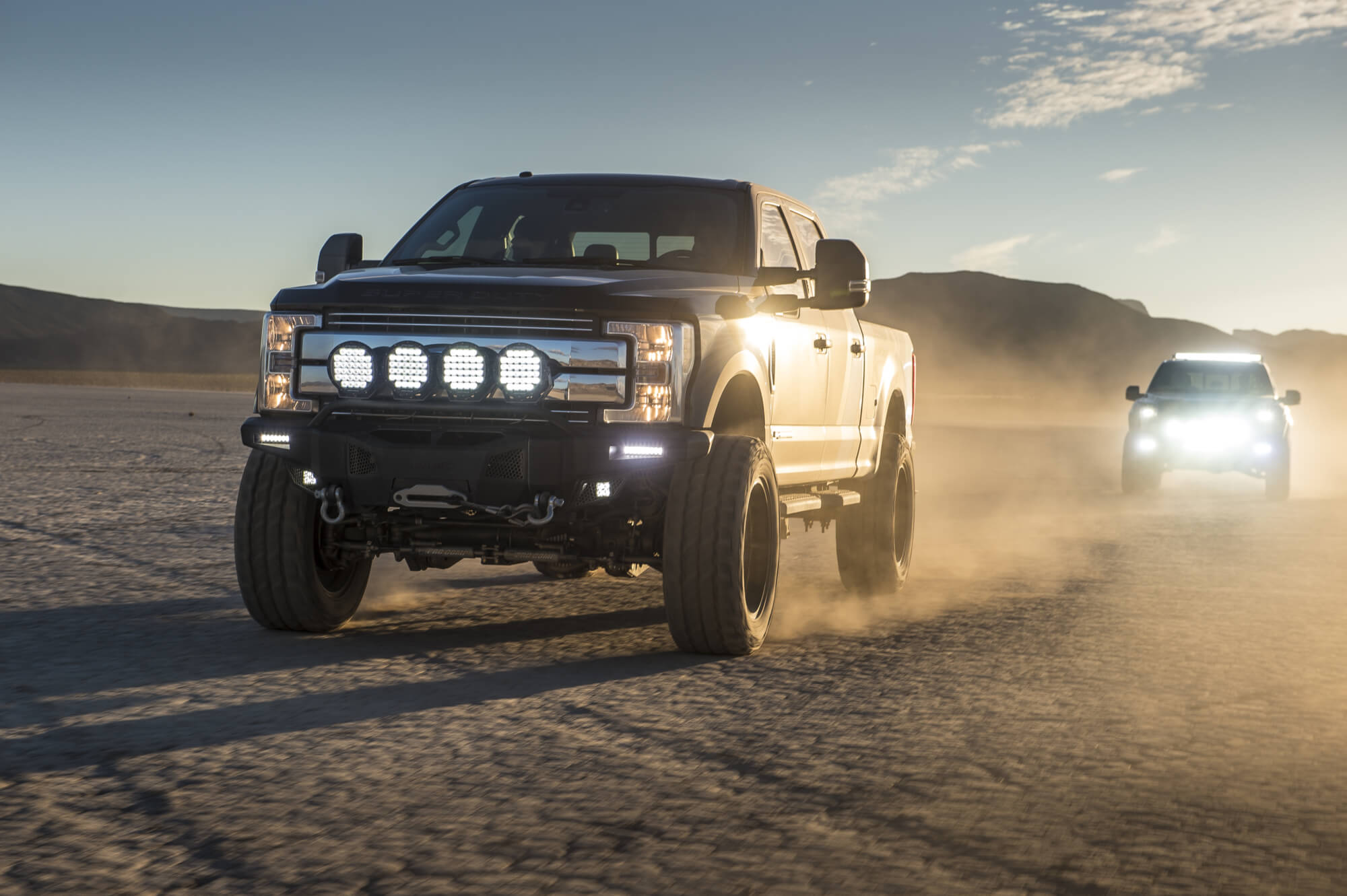
If you’ve driven off-road at night, or even down a poorly-lit road with only your headlights, then it’s very likely that you understand the need for aftermarket off-road lights. It’s also likely that the aftermarket lights you’ve considered include LED lights. LED off-road lights will help you see further into the darkness so you can spot sharp corners, unexpected drop-offs, washouts, fallen trees, and animals lingering in the roadway. The farther you can see, the more time you have to react to any of these unexpected situations. Any of them could easily destroy your 4×4 and harm you and your passengers.
Over the last decade, LED lights have taken over the off-road lighting segment and rightfully so. They have several advantages over many of the other off-road lighting options. LEDs produce a bright white light, draw less amperage than a comparable halogen light, can be had in driving, are available in a variety of beam patterns, and are an extremely cost-effective lighting option. Of course, like any new product, LED lights went through a difficult teething period. Many of the stigmas from the past still unnecessarily haunt LED lights today. However, there are some things to look for and avoid when choosing your LED lights. That’s where we come in. We’ll help make sure you get the right LED lights, so you’re not in the dark at the most inopportune time.
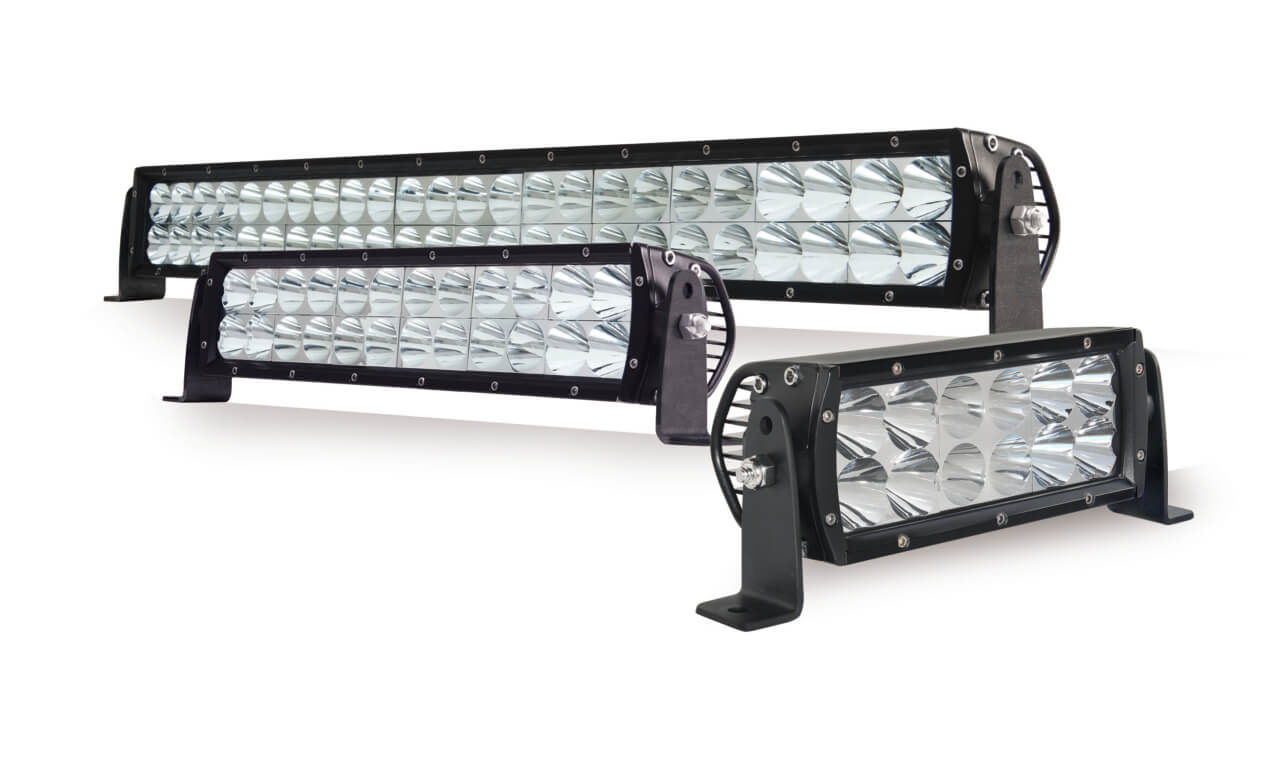
LED lights are the most common off-road lights currently available. They provide bright, quality light at an affordable price and they use less power than comparable conventional halogen light.
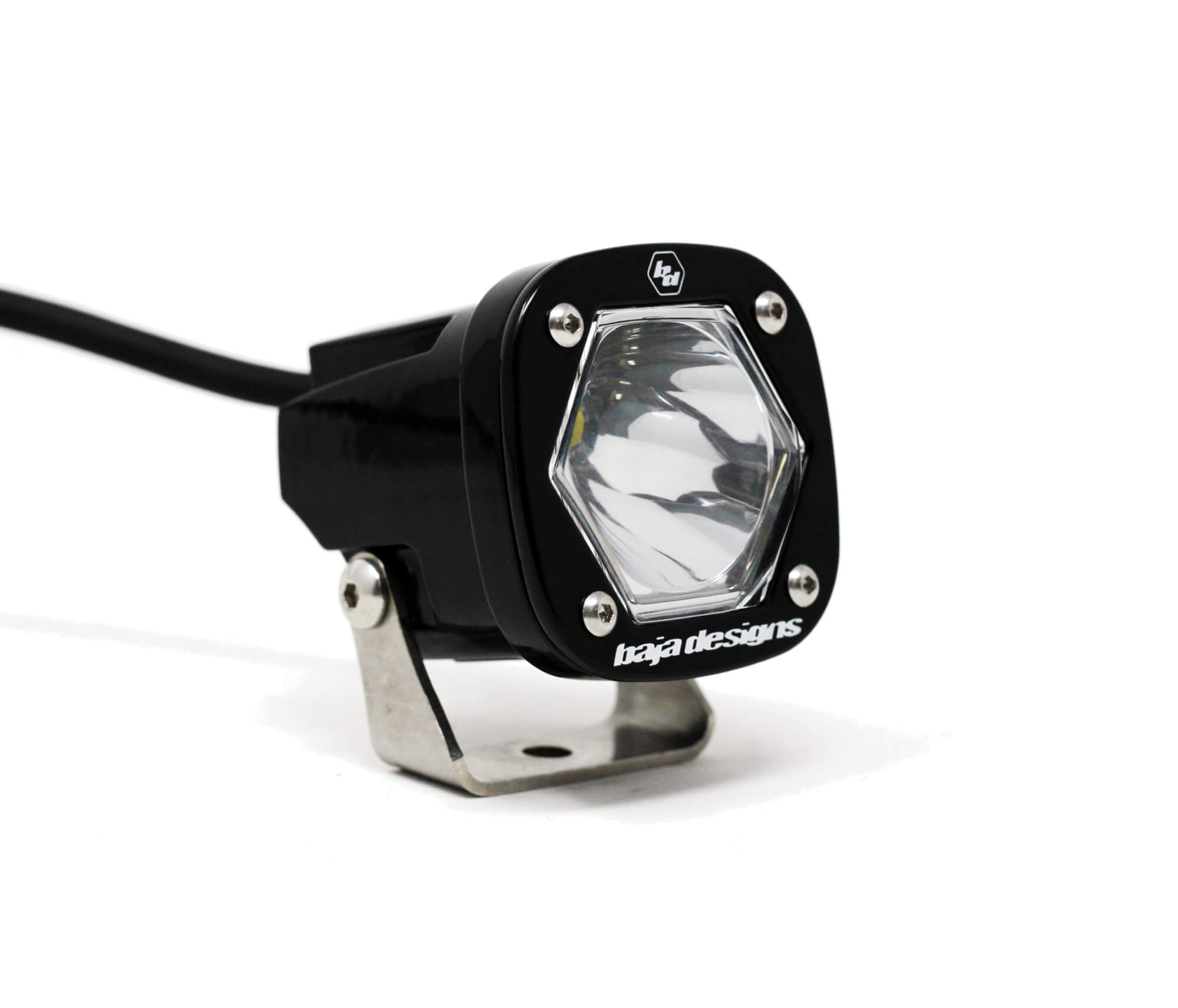
Cheap LED lights won’t last as long and won’t be as durable as quality LED lights. These traits are difficult to see, but quality lights, like this Baja Designs S1, will also have more robust housings, mounting brackets, and adjustment hardware.
Why Choose LED Lights Over HID Or Halogen?
Quite simply, LED lights make up the lion’s share of off-road lighting options. Dollar for dollar, LED lights produce more quality light than any other off-road lighting available. They are also available in almost any shape and size you can imagine. Other advantages include the abundance of light they produce for their compact size and the fact that they produce light in 5,000-6,000 degrees Kelvin. This light temperature mimics bright daylight at noon, which is where the human eye sees best. By comparison, the 3,500 degrees Kelvin light temperature that most halogen lights produce will seem dim and yellowish. Halogen lights also draw far more power to create less desirable light. The light output from HID lights is comparable to LEDs. But HIDs can be expensive, some require additional externally mounted electronics, and they are often slow to fire up when turned on.
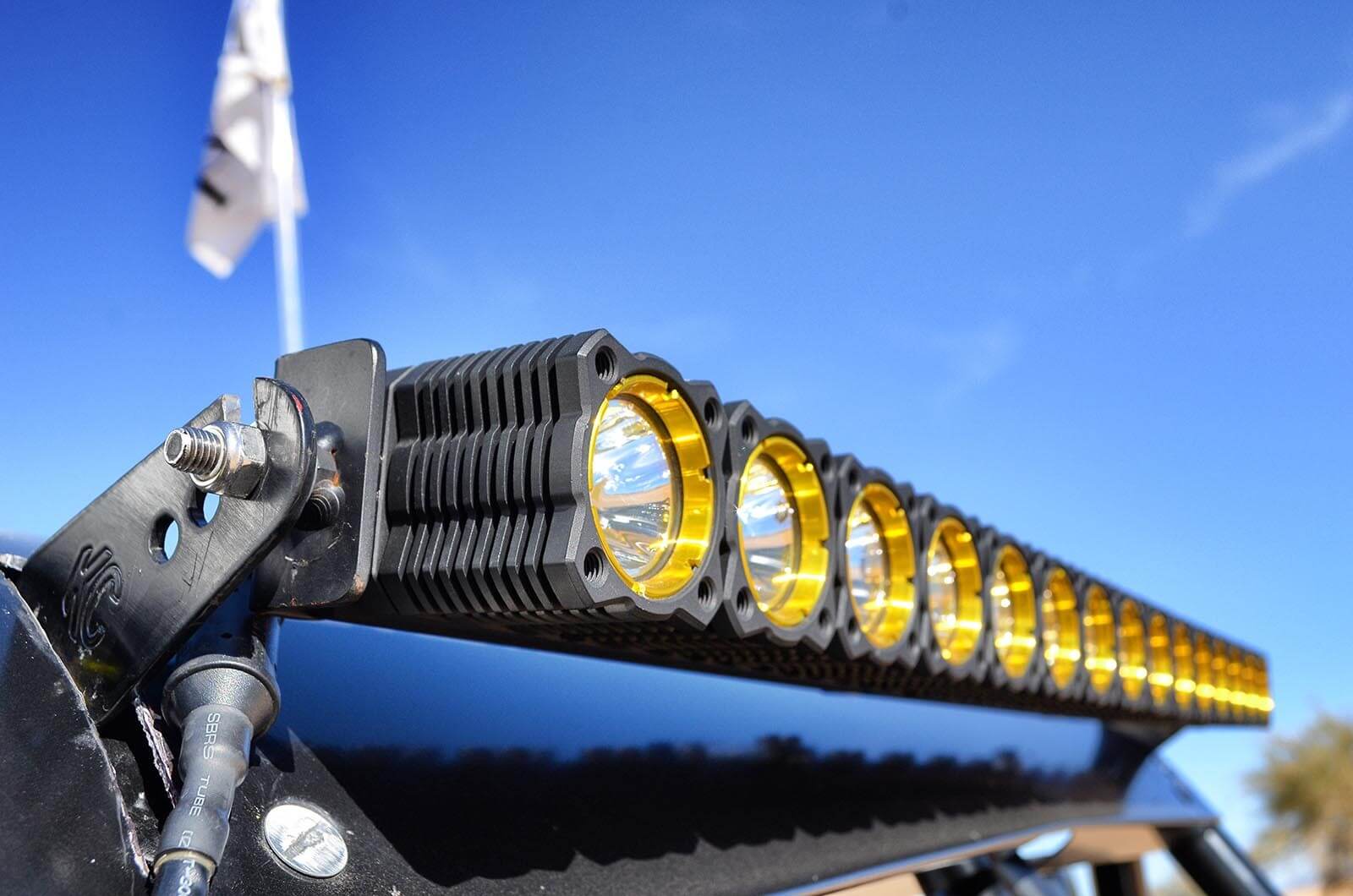
Lightbars have the advantage of placing many LED light elements up high where the spot beams can reach out further over a long distance, and flood beams can disperse more light. The disadvantage is they can typically only be mounted over the windshield where light reflection off of the hood can decrease overall visibility.
Why Not Just Buy The Cheapest LED Lights?
Like almost anything, you get what you pay for with LED lights. Cheap LED lights are not as durable or as water and dust resistant as their quality counterparts. They won’t last as long in harsh off-road environments. Cheap LEDs also won’t be as bright and poorly supported LED circuit boards can crack from vibration causing failure.
These internal features can be hard for the average off-roader to see without tearing a light apart. But what is apparent are the light housing and mounting. Less expensive LED lights generally feature cheap housings, thin mounting brackets, and unimpressively small mounting hardware. Inexperienced off-roaders won’t think this is a big deal until they find their lights pointing in all different directions. Off-road vibration will also weaken mounting brackets causing the light to wobble. This translates into less predictable nighttime visibility. Also, poorly designed light adjustment brackets will cause the lights to wander off of your desired settings no matter how tight you cinch down the hardware.
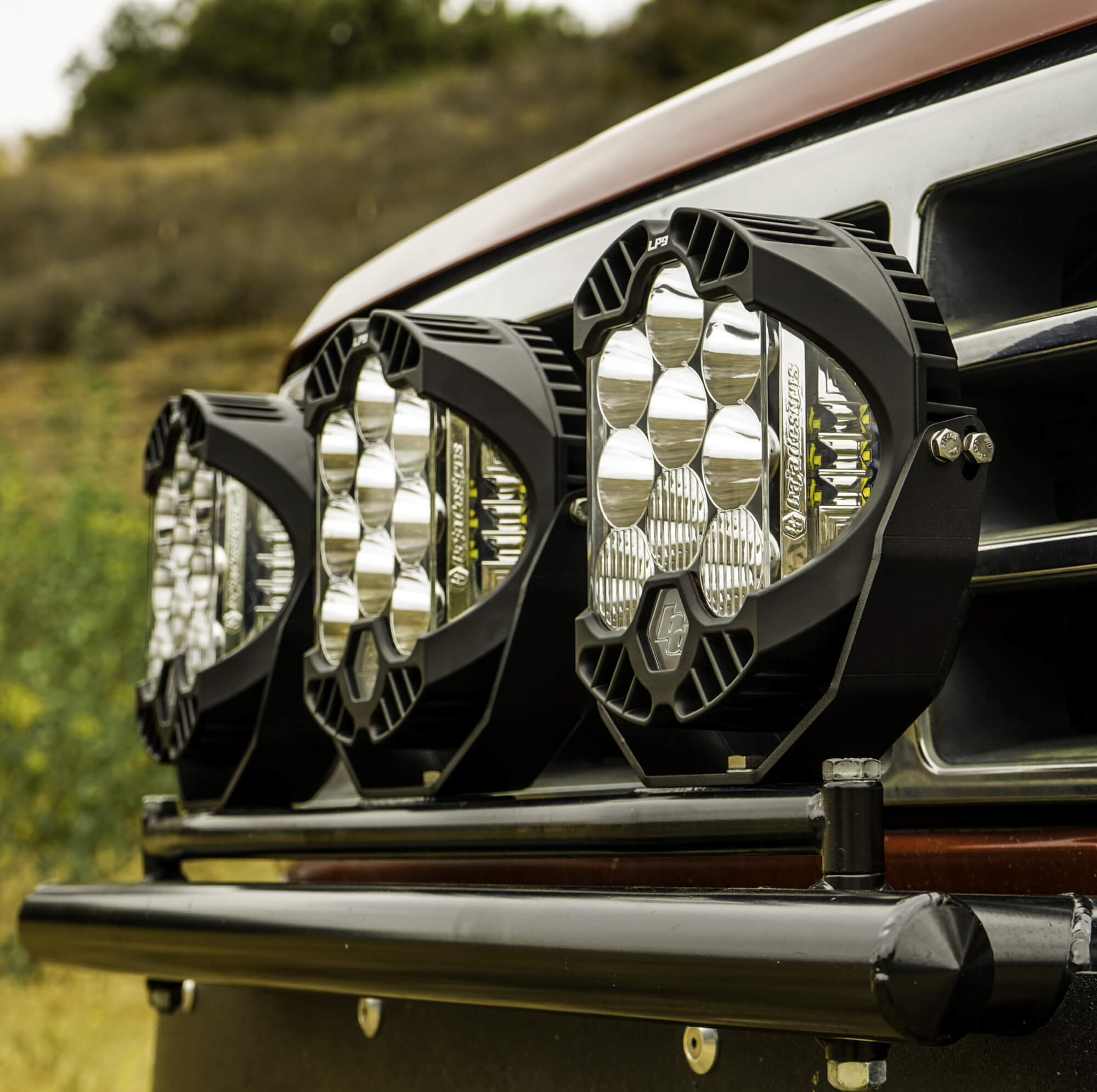
Always choose the right beam pattern for your lighting needs. Your options will include driving beams, spot beams, flood beams, work beams, and fog lights. The compact design of LEDs allows them to be available with hybrid beams too. These LED hybrid lights provide both spot and flood beams in the same light assembly.
Should I Get An LED Lightbar Or Individual Lights?
The LED light design you choose will depend on personal preference, but you should also consider function when selecting your lights. If you are buying LED lights because they look cool and never plan to wire them then, by all means, choose whichever light design makes you happy. But if you plan to use your LED lights off-road, your intended use will dictate the light design that’s ideal for you.
LED lightbars are best reserved for long open surfaces such as the top of a windshield frame or on the front bumper. Curved lightbars will generally disperse light over a broader area in front of your 4×4 than straight lightbars. Large individual lights can block your vision or decrease airflow through the radiator if mounted in poor locations. Small individual lights can fit in tight quarters or in a series where space allows without blocking your vision. Smaller lights also offer the ability to mix and match beam types to meet your nighttime lighting needs.
What LED Light Beam Pattern Should I Use?
Like most off-road lights, LED lights are available in several different beam patterns. Once you decide what you want the light to do, you can choose the proper beam pattern. A driving beam pattern can increase overall light up close and at a distance. Driving beams feature lenses that are similar to traditional headlights, but they provide additional light and are ideal for all-around use. For exclusively reaching way out into the darkness, you’ll want a spot beam pattern. Spot beams feature a clear focused lens and are ideal for high-speed driving in open terrain. For twisty trails, you’ll find that a flood beam is the best choice. Flood beam lights have fluted lenses that disperse the light across a wider area, but don’t reach out as far.
Another option is a work beam. These lights are similar to flood beams. But the lenses are even more shaped and fluted to disperse light at a wider angle and a shorter range. Work beam lights are great for lighting up a campsite or for use as rock lights. Because LED off-road lights are typically made up of many small LED light elements, they are more flexible.
Some LED lights are available with what is called a hybrid beam pattern. They feature spot beams in the center portion and flood beams on the outside edges, giving you the best of both worlds off-road. For dense fog and thick dust, you’ll likely want a fog or amber light. LED fog lights feature a flood beam pattern and some have an amber lens. The amber light color helps cut through fog and dust without reflecting back and blinding you.


Where Should I Mount My LED Lights?
Where to mount LED lights comes down to personal preference and where your 4×4 has space. But you should take beam pattern and your lighting needs into consideration. Spot beam LED lights can mount to the top of the windshield to help light reach out even further. But the preferred location is on the front bumper facing straight ahead. This helps avoid light reflection off of the hood that can be blinding to the driver and decrease vision at night. Flood beams can also mount up high. But for the same hood reflection reason as spot beams, they are generally best on the front bumper. You may want to splay your flood beams out toward the sides just a bit to increase visibility on twisty trails and when cornering.
Mount amber fog lights as low as possible. Below the front bumper is ideal. This helps get the light down the road and under the fog. It also keeps the light from reflecting off of the water droplets or dust particles and back into your face. Work beam lights should be as high as possible, such as on a roof rack to help cover a wider area with light. Work beam lights can also mount under the chassis of a 4×4 for use as rock lights. For the full breakdown on the pros and cons of each mounting position, check out our story Where Is The Best Place To Mount LED Lights?




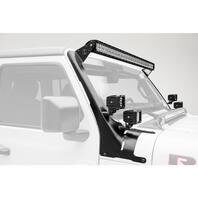
2